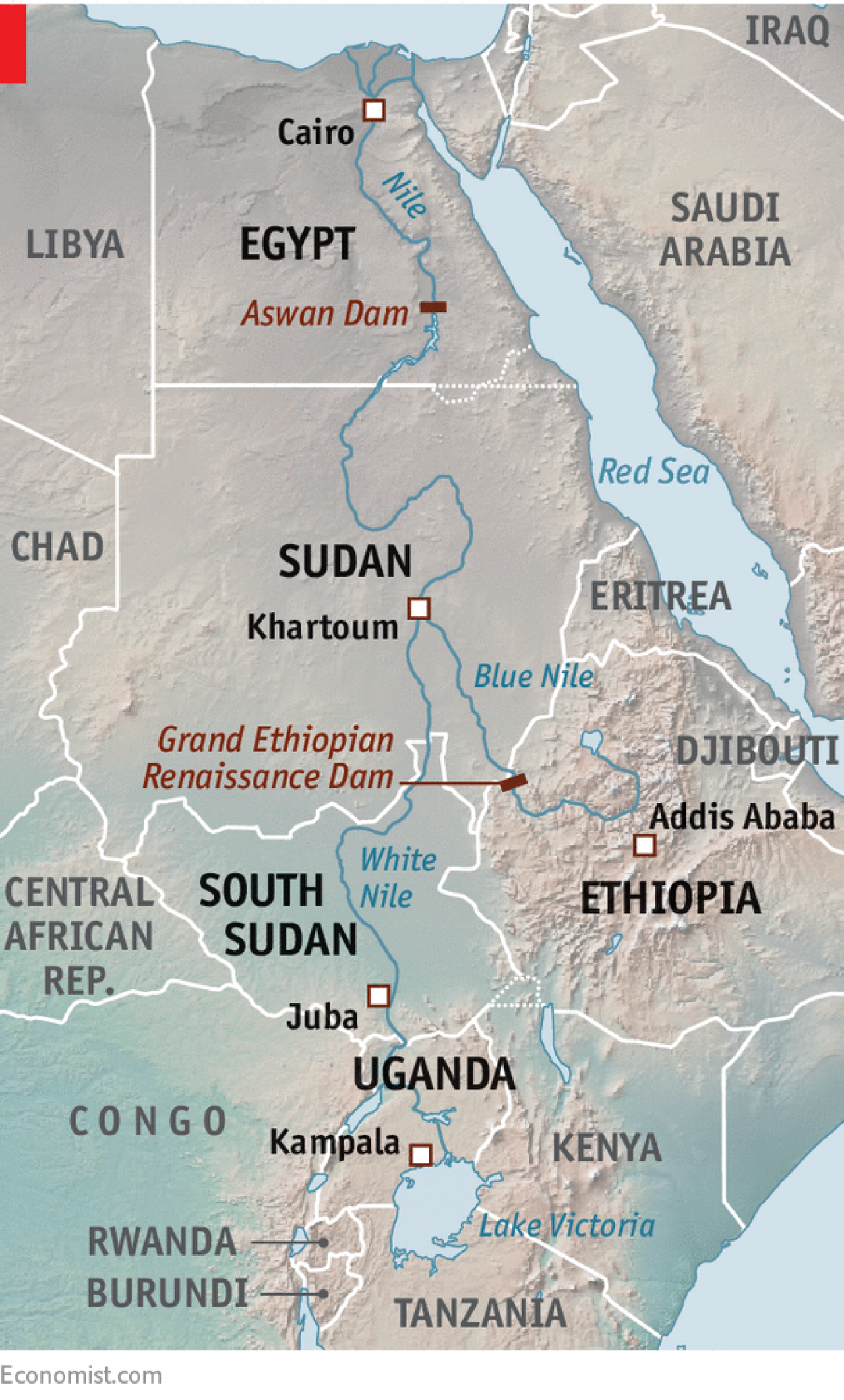How climate change might affect the Nile

Publication Date: August 8, 2017
Source: The Economist
Egypt, Ethiopia and Sudan will have to learn to share water, or their people will suffer.
TO THE untrained eye, the satellite photos of north-west Ethiopia on July 10th may have seemed benign. They showed a relatively small pool of water next to an enormous building site on the Blue Nile, the main tributary of the Nile river. But the project under construction is the Grand Ethiopian Renaissance Dam, which is more than halfway complete. And the water is why it is so controversial.
Since Ethiopia announced its plan to build the dam, it has inspired threats of sabotage from Egypt, which sits downstream and relies on the Nile for electricity, farming and drinking water. Egypt claims that it is entitled to a certain proportion of the Nile’s water based on colonial-era treaties. Ethiopia dismisses those agreements. The pool of water in the photos suggested that it was beginning to fill the reservoir behind the dam, reducing the river’s flow.
That turns out not to have been the case. The pool was deemed by Egypt to be a result of construction and seasonal Nile flooding. But the alarms it raised are indicative of how sensitive negotiations between Egypt, Ethiopia and Sudan have become. Talks over such things as how fast to fill the reservoir and how to operate the dam have stumbled. And a potentially huge complication looms over any discussion of the Nile’s future: climate change.
By 2050 around a billion people will live in the countries through which the Nile and its tributaries flow. That alone will put enormous stress on the water supply. But according to a study by Mohamed Siam and Elfatih Eltahir of MIT, potential changes to the river’s flow, resulting from climate change, may add to the strain. Messrs Siam and Eltahir conclude that on current trends the annual flow could increase, on average, by up to 15%. That may seem like a good thing, but it could also grow more variable, by 50%. In other words, there would be more (and worse) floods and droughts.
There is, of course, uncertainty in the projections, not least because differing global climate models give different numbers. But the idea that the flow of the Nile is likely to become more variable is lent credibility, the authors argue, by the fact that trends over decades seem to agree with them, and by consideration of the effects of El Niños. These colossal climatic oscillations, driven by changes in the temperature of the Pacific, are correlated with the Nile’s flow, and climate-change studies suggesting more extreme El Niños in years to come thus bolster the idea of a more variable Nile.
More storage capacity will be needed to smooth out the Nile’s flow. But unlike Egypt’s large Aswan Dam, which was built with storage in mind, the new Ethiopian one is designed for electricity production. Once water starts gushing through its turbines, it is expected to produce over 6,000 megawatts of power. It is unclear, though, if the structure has the necessary flexibility to meet downstream demands in periods of prolonged drought.
The talks between the three countries seem to be glossing over the potential effects of climate change. The filling of the reservoir is being negotiated in terms of years, but nature may not co-operate with their timeline. The countries would be better off focusing on how much water is needed downstream, which will vary in wet and dry years, say experts. Similar considerations will need be taken into account when running the dam. “Nowhere in the world are two such large dams on the same river operated without close co-ordination,” says another study from MIT. But so far co-operation is in short supply. The latest round of talks has been postponed. Even the methodology of impact studies is cause for wrangling.
Once the dam is up and running, the Nile’s variability will be controllable for some 60 years, say Messrs Siam and Eltahir. That assumes the dam is flexible enough and that the countries work together. Even then, storage would have to be increased by about 45% to keep things steady for the next 60 years. So the countries have time to build new dams; but that will need even greater co-operation.
Original Post >>
